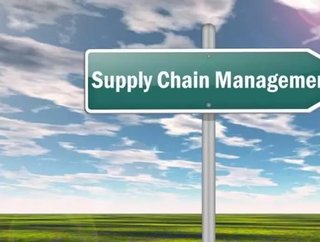The cost of waiting: Holding off on supply chain improvements

Brad Huff, Executive Vice President & General Manager of TAKE Supply Chain discusses how delaying supply chain improvements could impact both margin and market share.
As businesses continue to emerge from the 2008 recession, especially mid-market manufacturing and distribution companies, they are faced with the very real need to upgrade their talent, processes and tools. The challenge most companies face is ‘where and when’. Prior to the recession, the concentration was on internally focused systems like ERPs and CRM. These types of systems were considered the primary lifeblood of the organisation. And while I would not discount their importance, there is another area of the business that has emerged as equally critical: supply chain operations.
The supply chain can drive value in cost management and expansion
It’s no secret that supply chain operations have become far more complex and far more critical to business success. If you think about it, it is the one area of the company that is now capable of driving considerable value in both cost management and growth/expansion.
Why? Supply chain operations (plan/source/make/deliver) often steward a majority of a company’s revenue in the form of materials, finished goods, and personnel/labor costs. For example, a typical manufacturing company can have up to 45 percent or more of its working capital tied up in the supply chain at any given time. With that much money in play, inefficiencies with even a small percentage of impact can have a noticeable and negative effect on the bottom line.
For an example, let’s look at a $250 million dollar manufacturing company. With $110 million or more tied up in the supply chain, waste areas such pricing errors, non-optimised carrier/transportation rates, lost inventory, late payment penalties and foregone early payment discounts can run into tens (and sometimes hundreds) of thousands of dollars per month. This is lost and generally unrecoverable capital that could be put to better use.
For mid-market companies, which habitually have tighter margin controls, not having this additional working capital available restricts market and product development, and it strains the ability to respond and scale for the longer term health of the business. Or, put another way, by taking steps to reduce supply chain inefficiencies and convert them into working capital, companies are in a far stronger position to respond to changing market conditions and fund growth initiatives. See the link below for the infographic: http://takesupplychain.com/DataSheets/TSC-CostofWaiting-Infographic.pdf
It’s important to note that this is a basic illustration and your company’s metrics will vary from the example above. As you can see, however, the inefficiencies quickly translate into lost working capital regardless of where they are embedded in your balance sheet.
Fast and easy improvements
Fortunately, making improvements to supply chain operations is now far less costly and disruptive to the organisation. Many companies I speak with are pleasantly surprised at the speed and ease with which they can incorporate improvements, such as workflow automation, into key contribution areas like procurement and accounts payable. In fact, because of advances in data integration and secure SaaS delivery along with complementary implementation/roll out services, supply chain improvements can be done in advance of or in parallel with other system initiatives without disrupting internal resources.
By connecting through the cloud and utilising standard data feeds for key supply chain activities, we’ve seen companies capture enough additional working capital to not only improve margin and growth initiatives, but help fund ERP upgrades and replacement projects. This continued focus on supply chain operation improvement will be crucial for mid-market growth.
- Fairtrade calls on David Cameron to stop trade deals undermining global poverty goalsDigital Supply Chain
- JDA creates a more profitable omnichannel supply chainDigital Supply Chain
- Mitigating risk across the healthcare supply chainDigital Supply Chain
- McDonalds vow to end deforestation in its global supply chainDigital Supply Chain






